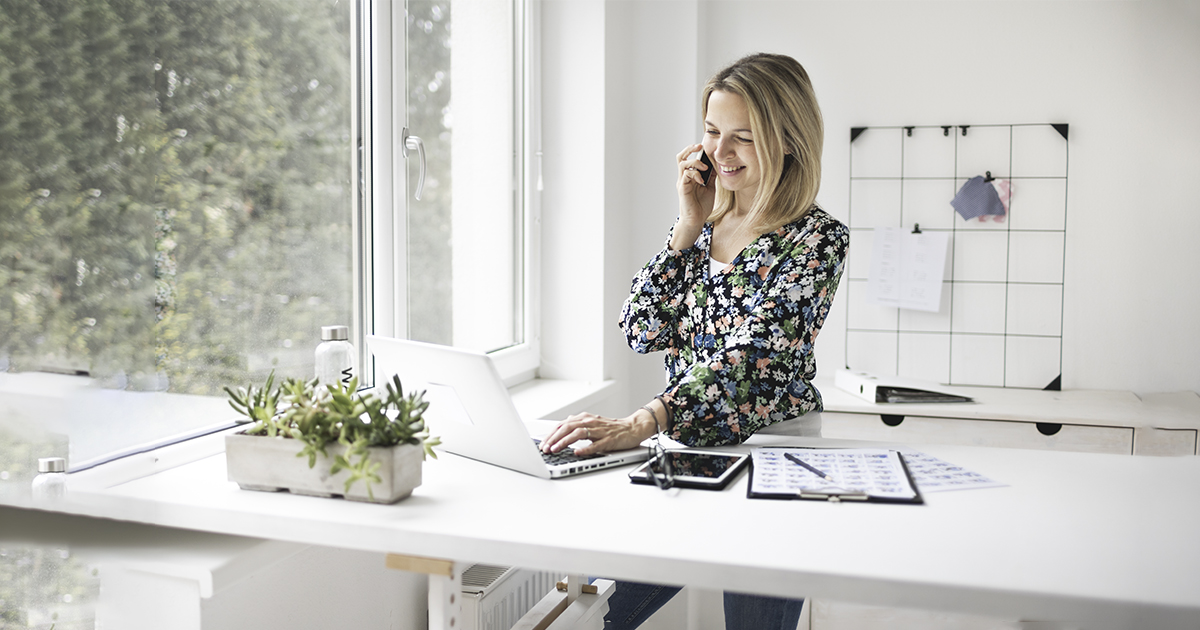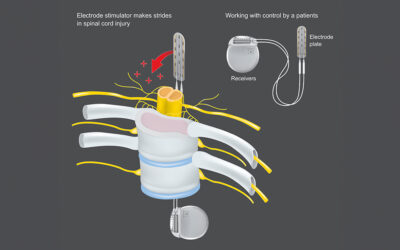Sitting at your desk all day can cause back pain. Will switching to a standing desk setup help? Read on to find out.
COVID-19 has changed many aspects of American life, and one of most pronounced is how and where we work. To stop the spread of the virus, companies allowed workers to work from home or split their hours between office and home using a hybrid work model. The result was a huge surge in employees who work from home.
As people began to work from home more regularly, they quickly realized they didn’t have a proper desk setup in their houses. Instead of an office desk and chair, they crouched on their sofa with a laptop or on a stool at their kitchen table, leading to back and neck pain. Even those who had dedicated office space in their residence with a desk and chair often suffered from lower back discomfort. To alleviate back stiffness, some workers considered purchasing a standing desk, which people frequently claim can reduce some of the health risks caused by sitting for long periods of time. But can these devices actually reduce your neck and back pain? Or might they even lead to more serious pains?
How Sitting All Day Affects Your Back
Sitting has been termed the “new smoking” due to the damage it can do to your health. While this may seem like an exaggeration, there’s no denying the health risks caused by extensive sitting. When you sit for eight hours a day at work and then more at home in front of the television, you’re not active and that can lead to serious health problems across the board.
When it comes to your back, sitting for long hours in a chair can strain the muscles in your back, neck, hips, and buttocks. Sitting can also compress the discs in your spine, leading to stiffness and pain. And if you slouch forward — as many of us do when seated — that pressure on your spine increases. In addition to simply sitting, the way you set up your desk and computer may also be causing problems. If the computer is too low or too high, you may be stressing your neck muscles in addition to your back.
How a Standing Desk Can Help
Now that you know how harmful sitting all day can be, you may want to try a standing desk or a sit-standing desk, which lets you switch between the two positions. One study found workers using a sit-standing desk reported less lower back pain. Other studies have reported standing at a desk burns more calories and results in better productivity. Generally speaking, standing may force you to improve your posture which in turn can take the pressure off your lower back.
However, a standing desk will not cure an underlying orthopedic issue, such as scoliosis or a herniated disc. And standing could exacerbate leg swelling or foot pain.
Staying Healthy When Using a Standing Desk
To avoid back pain with a standing desk, follow these tips:
Set Up Your Desk Correctly. Incorrectly setting up your standing desk or standing with poor posture could strain your back and neck more than sitting. Therefore, it’s important to rearrange your desk layout and positioning so you don’t end up with extra back pain. First, adjust your standing desk so your head, neck, and spine are aligned and your computer monitor is at eye level. As you stand, move your head slightly back and your spine in an “S” curve. Your elbows should be at a 90-degree angle, with your wrists resting flat on the desk.
Take the Pressure off Your Feet. It’s not just your back that will bear the strain of standing all day — your feet absorb most of your weight as you stand. To take the pressure off your feet, wear comfortable supportive shoes, or place a cushioned mat under your feet for extra support.
Don’t Make the Switch Overnight. Suddenly switching from a seated desk to a standing desk can be a shock to your body. Ease into your new setup by alternating between sitting and standing throughout the day until your body adapts and you find the most comfortable position.
Make a Homemade Standing Desk. Before you make a large investment in a standing desk, devise a homemade one at home. Prop up your computer on a pile of books or boxes and give it a try. You may find a standing desk isn’t helpful, or switching between standing and sitting is better for your back.
Get Moving. Whether you sit or stand all day, remember to get up and move frequently. Take a break to walk around or stretch your legs and back to unlock stiff muscles. At the end of the day, your back will feel much better if you’ve moved throughout the day.
Sit Properly. If you decide to stay seated or alternate between sitting and standing, sit properly with your lower back straight, shoulders relaxed, and feet on the floor. For more back support, insert a pillow along your lower spine.
Are You Suffering from Lower Back Pain?
For years the doctors at Comprehensive Orthopaedics have successfully treated back pain with conservative and surgical methods. We will diagnose your condition and recommend therapies so you can live pain-free. Contact us today for a consultation.



